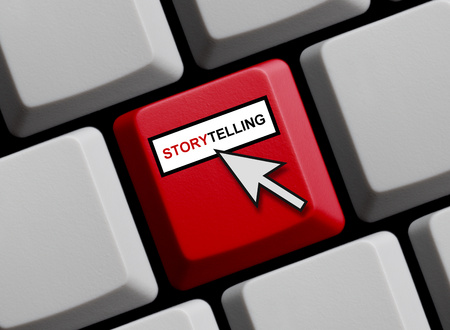"Storytelling" : story as content | Weboptim
How can we apply storytelling to our writing? Storytelling is an art - subjective, emotional, and diverse because of human variables.
Why storytelling?
One specific argument in its favour: persuasion. It's easy to use facts and figures, but the real power of stories is to change someone's mind.
There are 6 types of stories:
- "who am I" type story
- "why am I here" type story
- "vision" type story
- "teaching" type story
- "values in action" type story
- "I know what you're thinking" type content
From first two (who am I, why am I here) types gives you the foundation you need to build trust with your audience. They assume that we are ourselves and these stories allow us to share our motivation. If we give enough humanity, our audience will find common ground with which they can connect with us.
A vision stories tell you how things might turn out. It shows the audience what we have in us for them.
If you are holding a meeting, the vision story can include a story about how your company has triumphed in the past. If we're marketing a product, the vision story might talk about a future state where the problem our product solves no longer exists.
A teaching type story gives the target audience the opportunity to learn from the mistake without making it. They help to shape how the target audience understand the potential solutions available to them.
For example, if a story were about how a "site audit" can help you understand all the content sources available to you and use a particular tool, you are pointing your target audience in the direction of the solution and they will easily choose that tool.
From values in action type stories are similar to visions and teaching stories, but focus on the core values we want to reinforce. We should focus on positive values rather than war stories.
One way, for example, if you are a wedding company, is to proudly write an article about a bridal consultant who has handwritten a thank you card to every bride who has bought a dress from him.
A know what you think type of fractions and allow us to neutralise concerns without them ever having been raised. This makes it relatively easy to anticipate audience objections, so we can use this kind of story to prevent them.

How do we use them on the site?
You might think that your site content is perfect for stories and conversions. Unfortunately, however, this is not always the case in real life.
It is not always the same what type of content is best for a particular type of story.
Who are we and why are we here?
To help the public get to know us, we put it front and centre on the website.
Our vision
The homepage is a perfect place to present our vision to the public.
Note that every vision type story, regardless of where it is on the page, details and explains the same vision.
Teaching
The blog on this website is a typical story of this type. We don't want to sell anything, but we want to bring a new way of thinking to our target audience.
Depending on who you are, the stories can help you teach your target audience about fashion through accessories, for example, or how to save money through different contacts.
Values in action
We can do this through teaching or even through blog content.
Demonstrate the value by telling a story about, for example, effective project management that doubles sales, helping to overcome customers' internal objections. Or teach your customers how to use different spices by giving them help with recipes.
We know what you think
People talk a lot. This is the perfect moment to share these types of stories.
The framework is universal, but its application depends on individual experience.
Source: moz.com